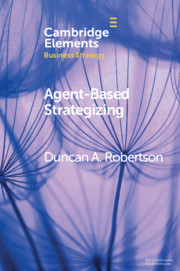Element contents
Agent-Based Strategizing
Published online by Cambridge University Press: 17 July 2019
Summary
- Type
- Element
- Information
- Series: Elements in Business StrategyOnline ISBN: 9781108767835Publisher: Cambridge University PressPrint publication: 17 October 2019
References
- 17
- Cited by

